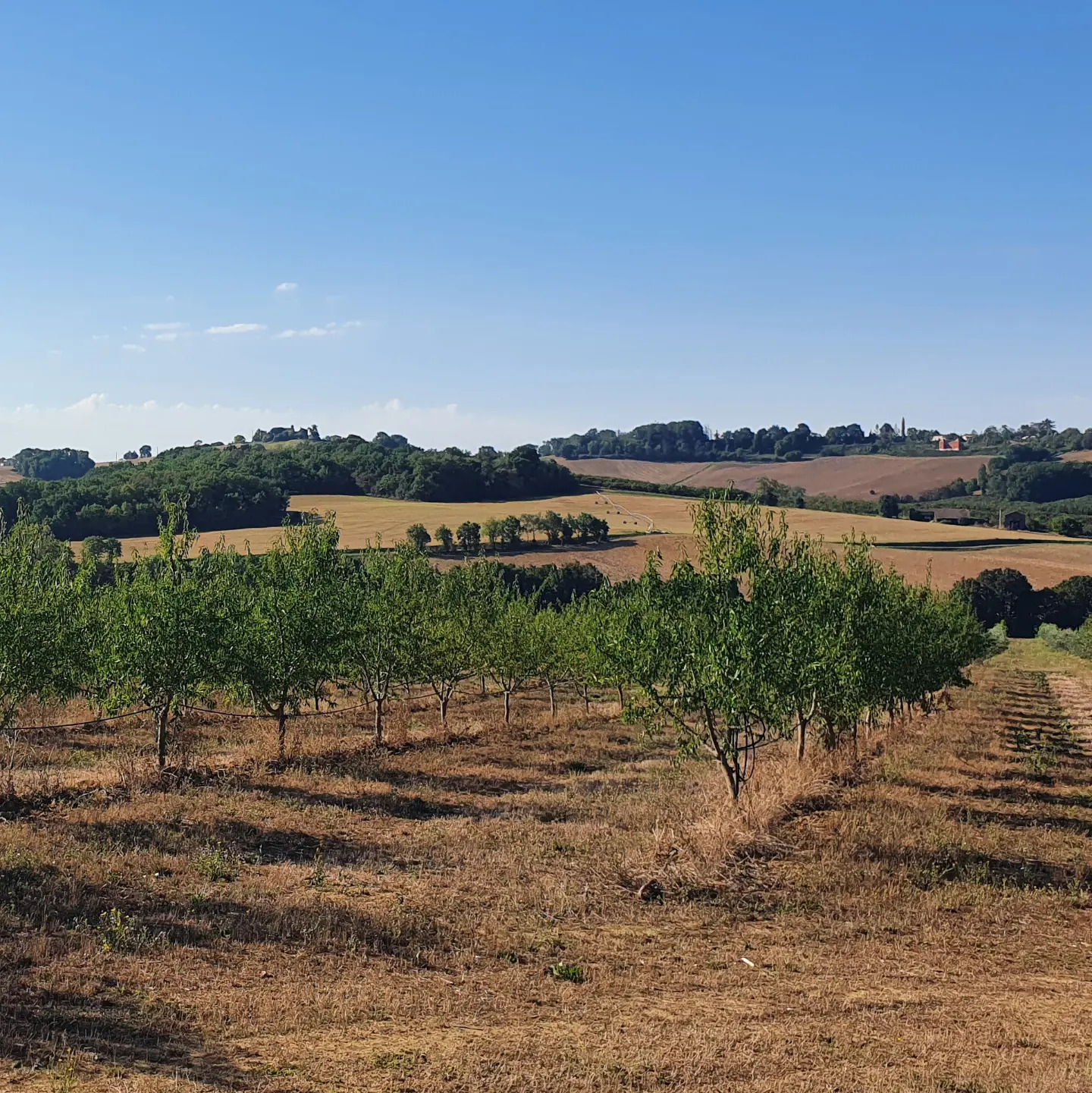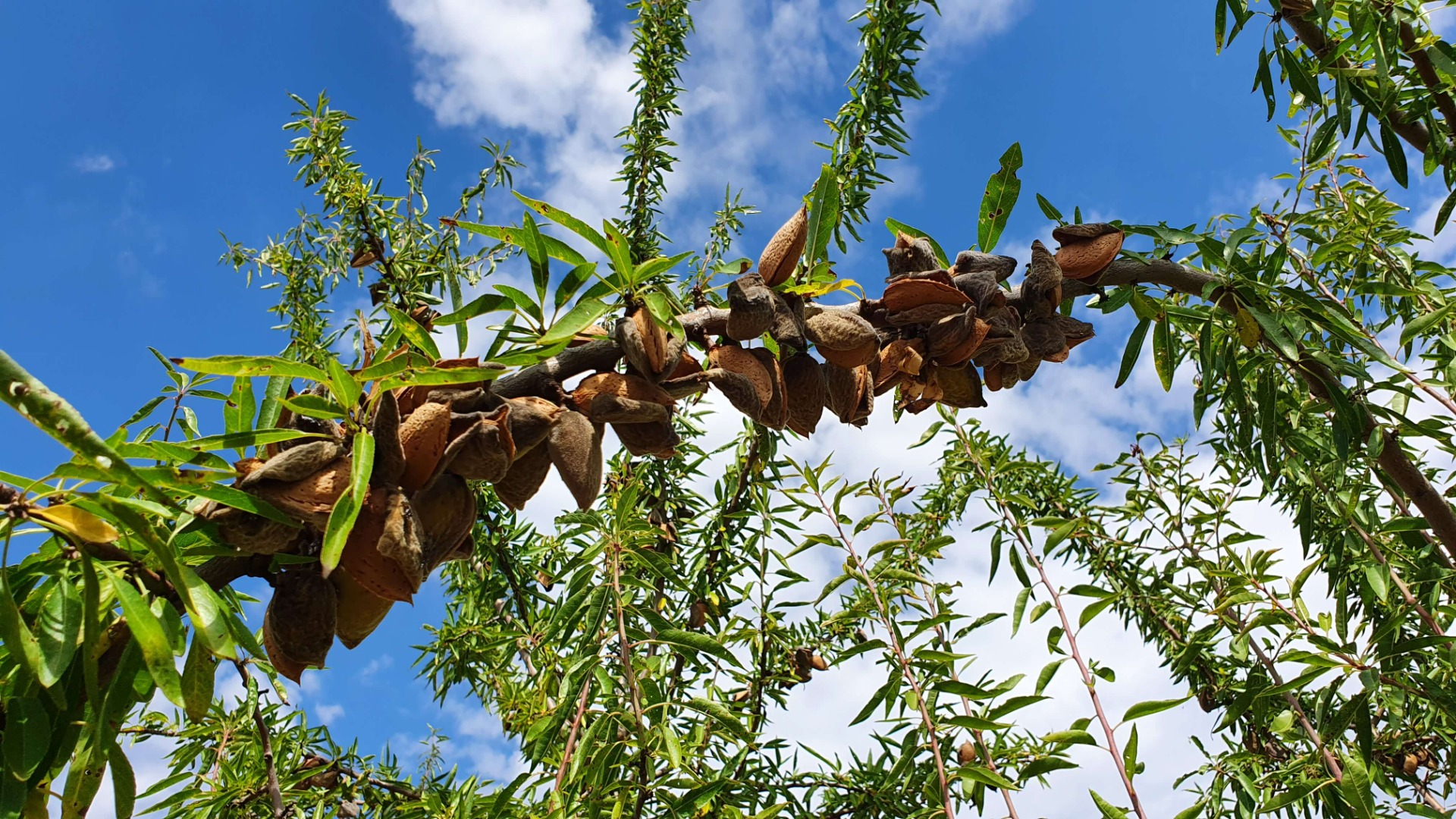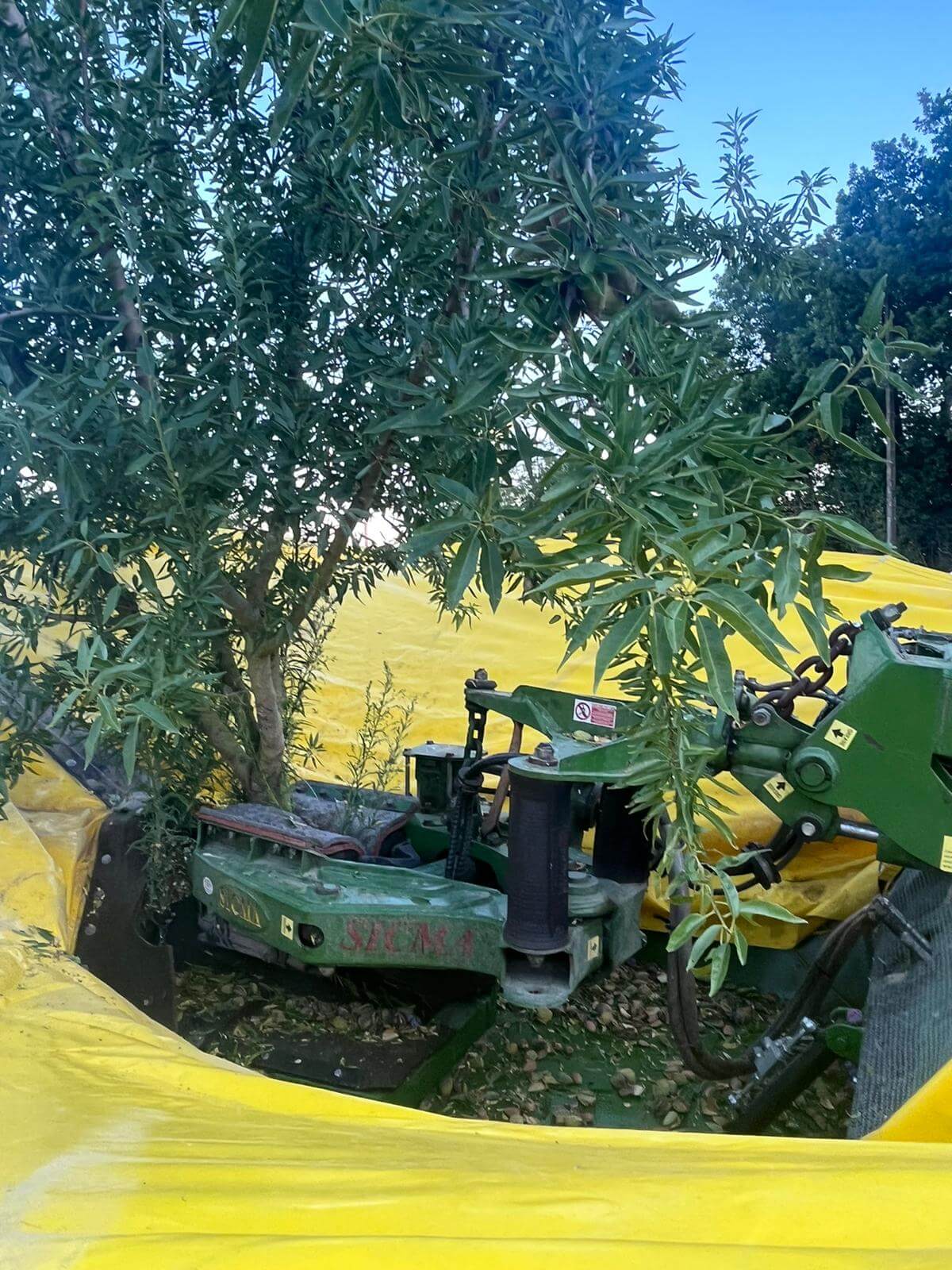
Almond orchards
The French almond is a delicacy
The sweet almond, whose botanical name is "Prunus amygdalus Dulcis", originated in the Middle East (Afghanistan and Iran) before settling in Europe and along the Mediterranean coast.
It was the Franciscan fathers from Spain who introduced this fruit tree to North America in the 18th century, particularly in California. These regions with warm climates are an ideal home for the almond tree. Contrary to popular belief, the almond tree is a very hardy species that can withstand temperatures down to -25°C.
France has over 500 hectares of orchards spread over 250 farms. Together they produce nearly 1000 tons of almond per year, which is less than 0.01% of world production. This local production is far from covering our consumption needs, which makes French almonds a delicacy to be enjoyed wisely!
Finally, we import most of our almonds from the United States (the world's largest producer) and from Spain.

The particularity of the almond tree

The almond tree is between 6 and 8 metres high when fully grown, and is shaped like a large ball. Its production cycle begins in the 5th year and its production period exceeds 50 years.
It is one of the few fruit trees to have flowers before its leaves. This moving display of colour (white or pink) takes place every year when the rest of the vegetation is recovering from winter (end of February - March).
This characteristic makes it particularly vulnerable to late frosts which impact on the flowers and therefore on future fruit. The frosts in 2022 in the South-West of France destroyed more than 80% of the almond crop. Note that the harvest takes place in September.
Discover our different varieties
Within the orchards of the "Vergers du Sud-Ouest" we distinguish French and Spanish varieties:
French varieties :
- Ferragnès: Slightly pointed and larger than the other varieties, its tender and sweet kernel delivers a slight nuance of cocoa and pepper. It is highly sought after for chocolate coating, nougat and biscuit making.
- Lauranne: Smaller sized almond. Soft and crunchy, with a little bit of harshness, it is the perfect ally for pastries and chocolates.
Spanish varieties :
- Guara: Rounder and lighter brown than the others, Guara is best eaten grilled or fried.
- Bellona: A recent variety, developed from the Spanish star almond (Marcona). The Belona is slightly domed and has a soft texture and sweet taste. Its high oil content makes it ideal for baking.
- Soleta: Tasty, this variety is larger in size. The skin of the kernel is easily removed.





